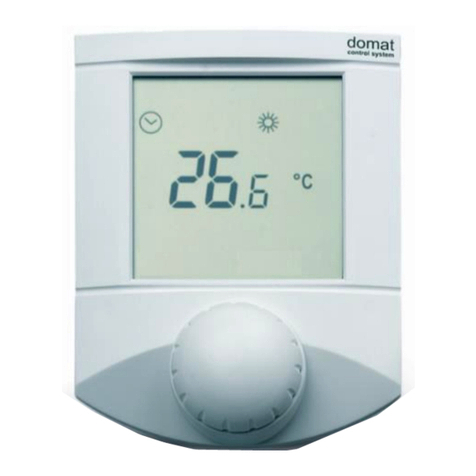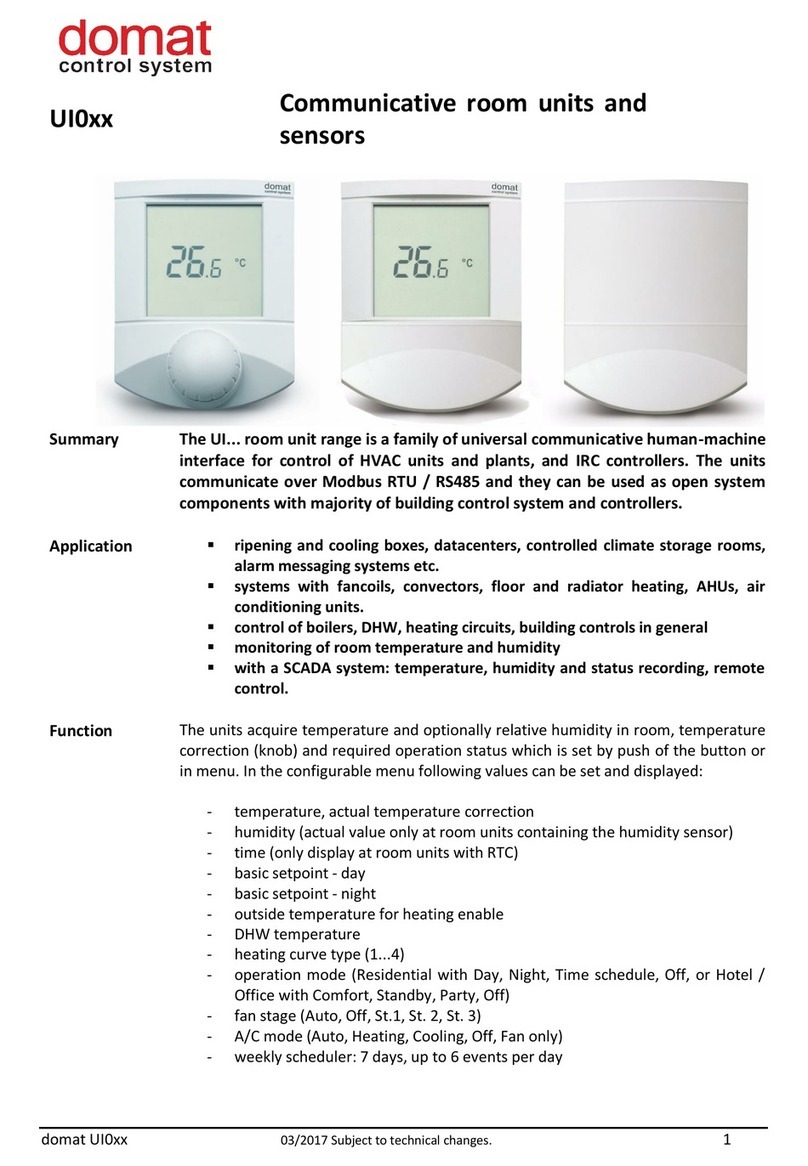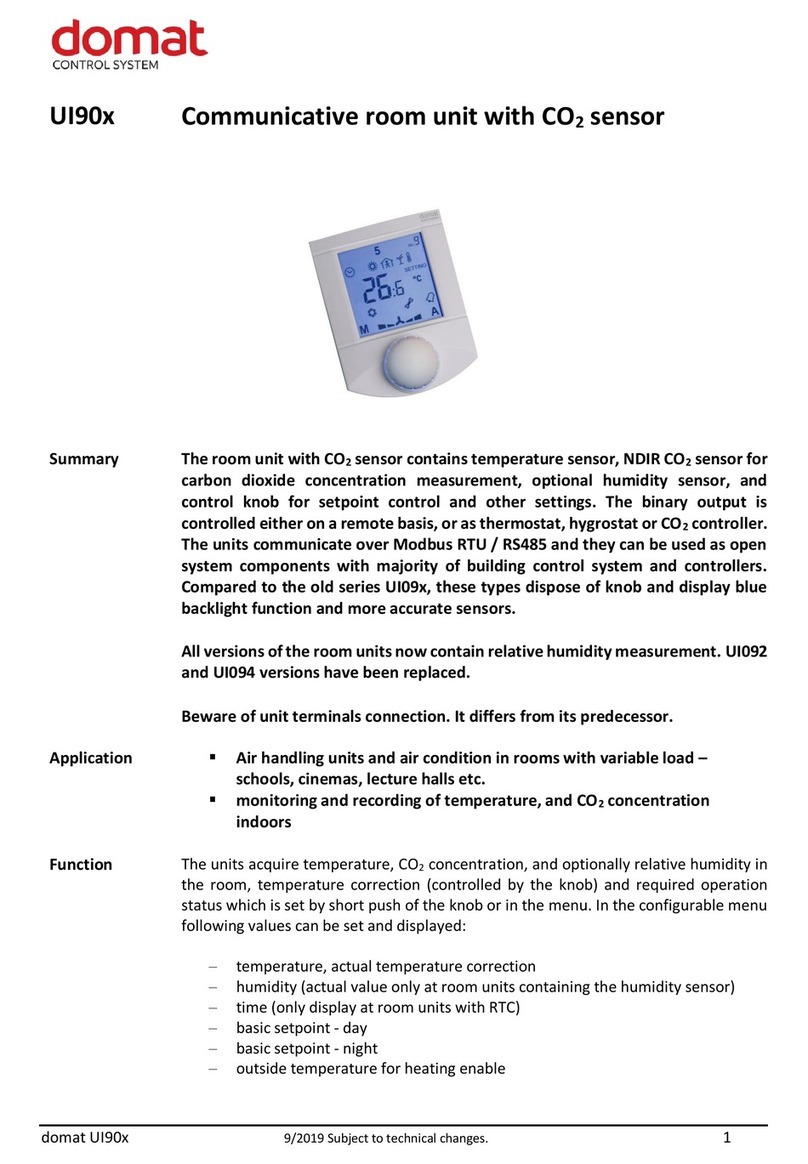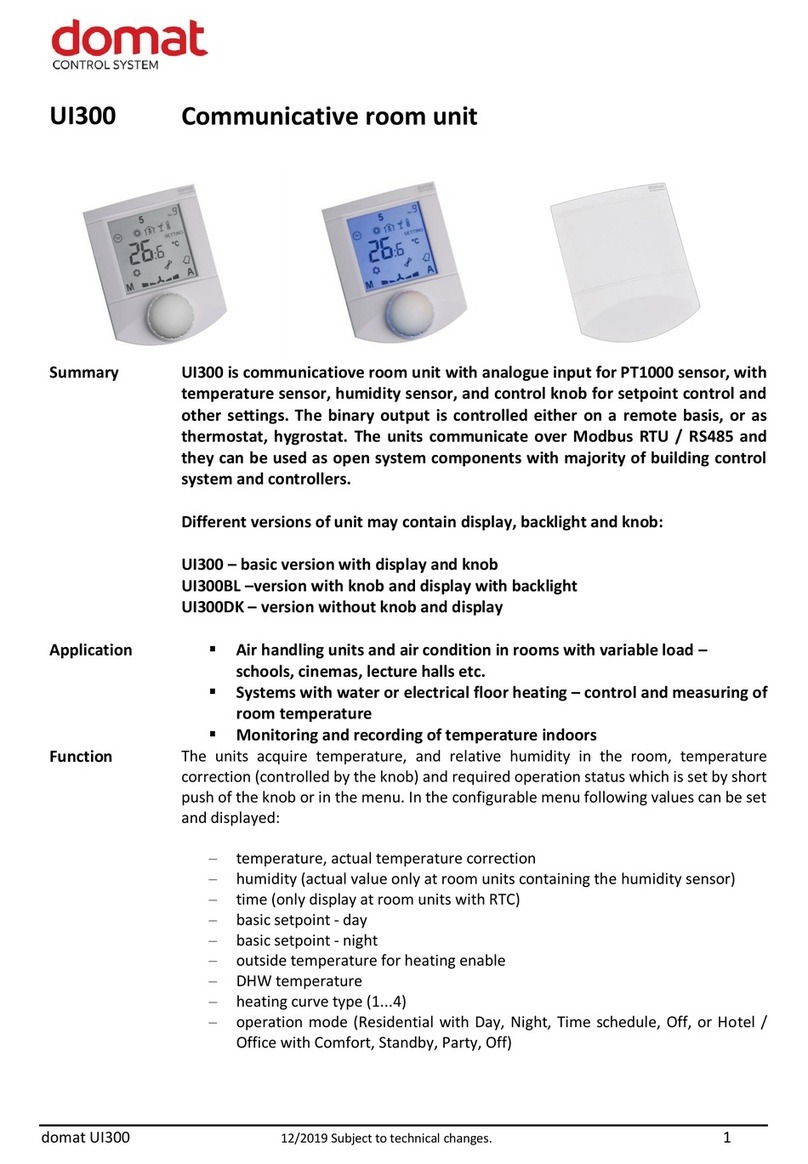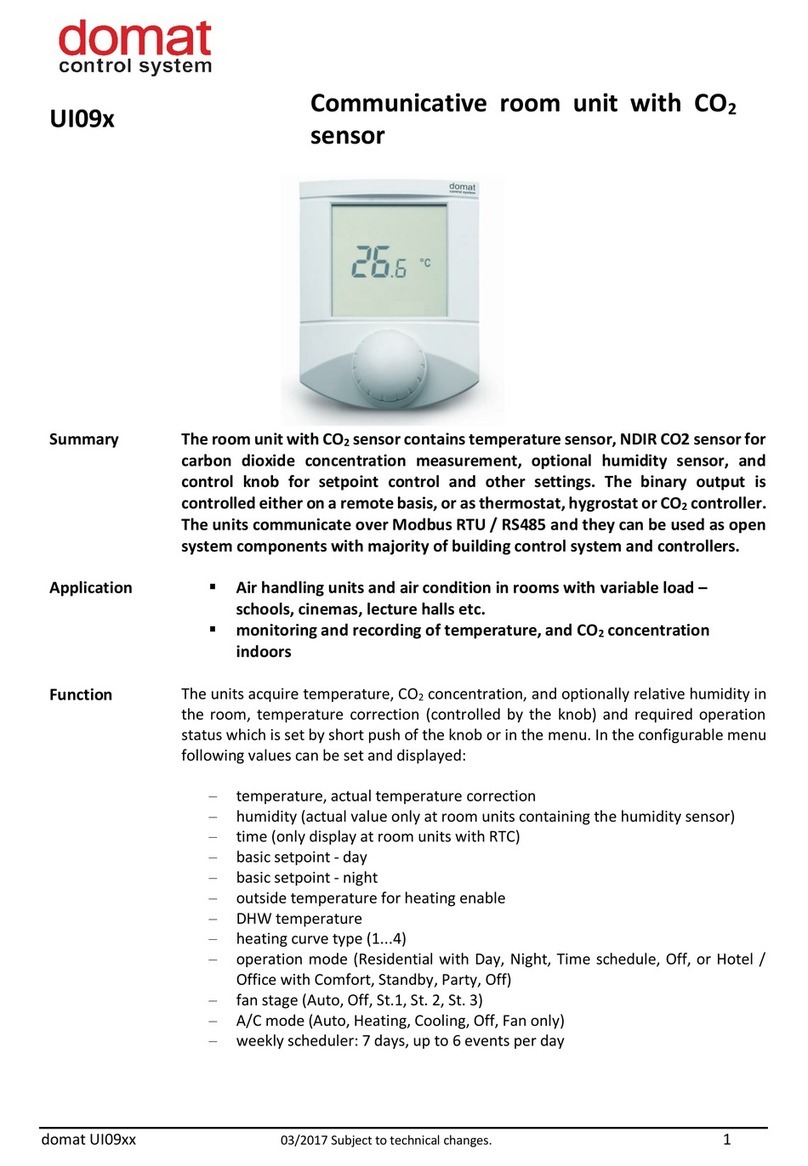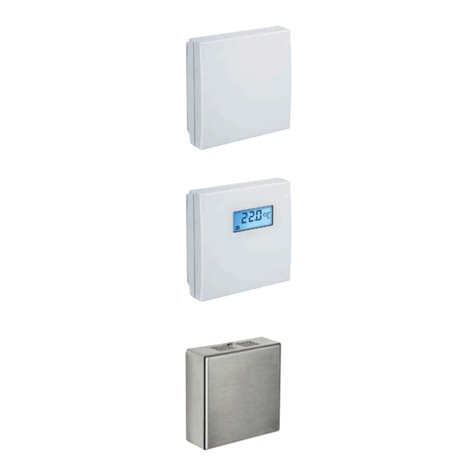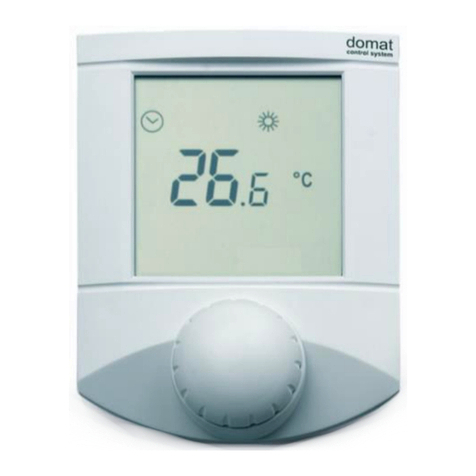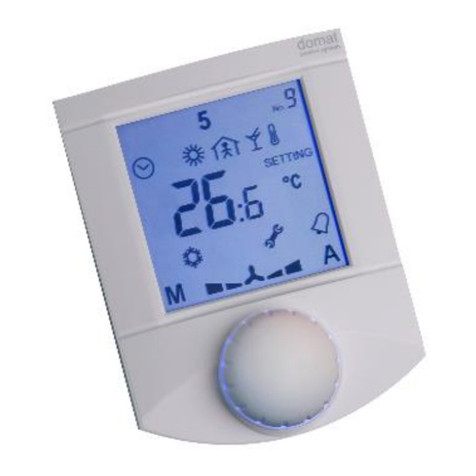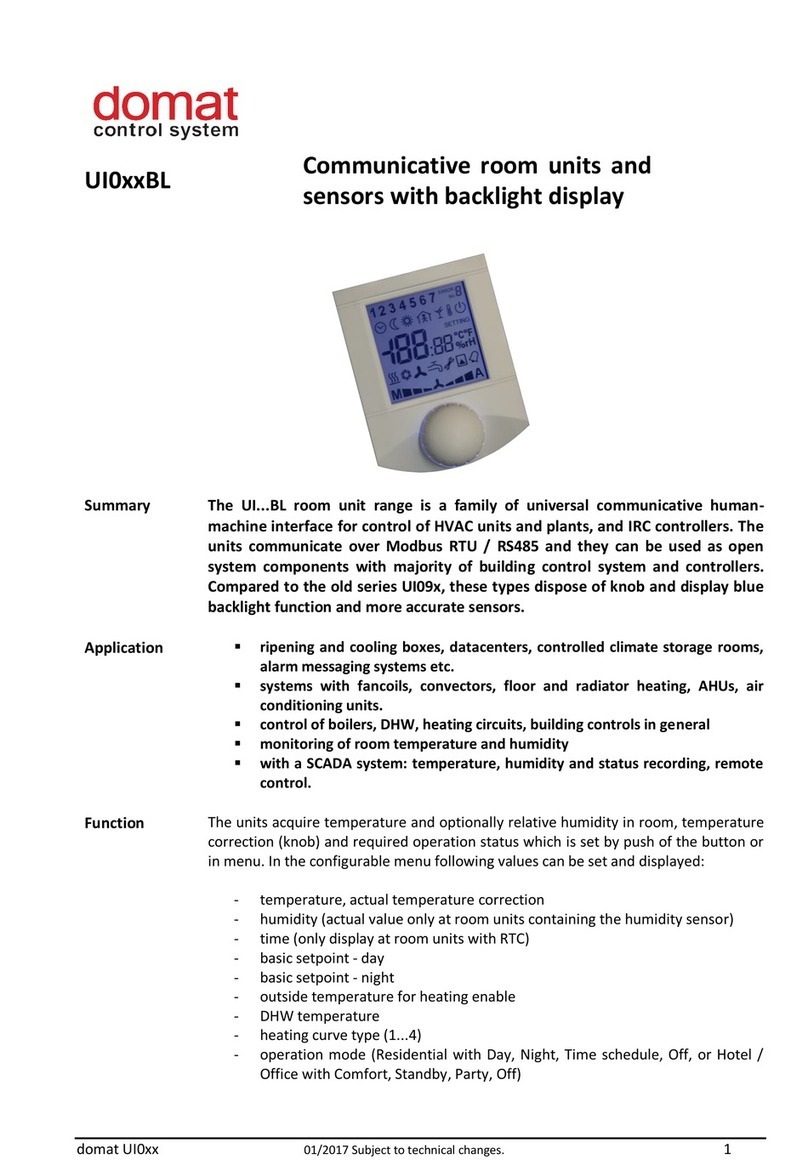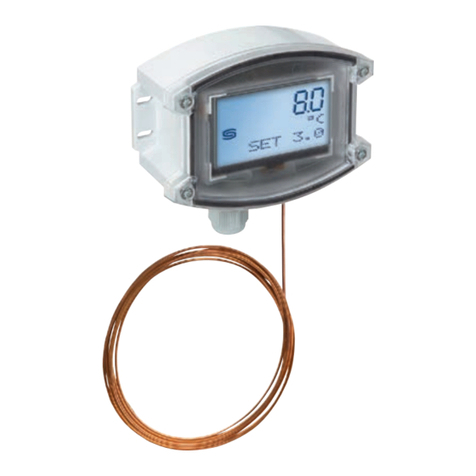Temperature correction:
Turn the knob clockwise to increase setpoint, turn it counterclockwise to decrease
setpoint. The maximum correction range can be modified over the bus e.g. with the
ModComTool configuration tool.
Operation mode change:
Push the knob shortly (<1 s). Each push changes the operation mode to Party –Day –
Night –Off –Auto.
In the Auto mode, the Day / Night / Off modes change according to time schedule).
The Party mode overrides to Comfort for 120 minutes, then follows the actual time
schedule.
The weekly time schedule switches between Day, Night, and Off modes according to
the event list. There may be up to 6 events per day.
Time schedule settings:
Switch to the time schedule settings mode with a long push (>1 s). The controller
switches to settings mode (clock icon).
Turn the knob to select the weekday (1 to 7). Then short push to confirm the selection.
Turn the knob to select the event (large number 1 to 6). Each event displays the mode
activated by this event.
Short push to confirm the event selection. Turn the knob to select the operation mode
(Day, Night, Off, Event inactive) invoked by this event. If the event is not active, the
operation mode is not changed at the set time.
Short push to confirm the operation mode setting. The event time displays. Turn the
knob to set the time of the event and confirm by a short push. Then turn the knob to
select another event or long push and turn the knob to select another weekday.
After all desired events have been edited, long push to leave the time schedule settings.
The controller goes to the basic display mode also after 30 secs of user inactivity.
Change of setpoints and controller time:
Switch to the settings mode with a superlong push (>2.5 s). The controller switches to
settings mode (flashing thermometer icon).
Turning the knob selects between following settings:
-Controller time and day of week (Clock icon, Day of week)
-Setpoint temp. Heating Day mode (Temperature, Heating, Day are flashing)
-Setpoint temp. Heating Night mode (Temperature, Heating, Night are flashing)
-Setpoint temp. Heating Off mode (Temperature, Heating, Empty house are
flashing)
-Setpoint temp. Cooling Day mode (Temperature, Cooling, Day are flashing)
-Setpoint temp. Cooling Night mode (Temperature, Cooling, Night are flashing)
